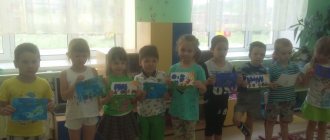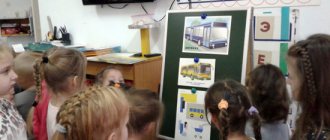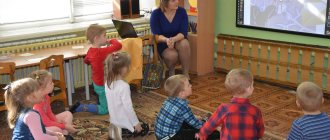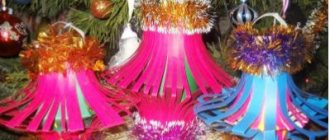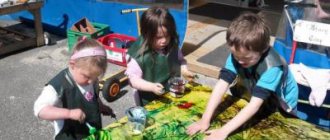Preview:
Goal: formation of artistic and creative abilities.
— create conditions for consolidating children’s knowledge about non-traditional artistic techniques of drawing and appliqué;
- create conditions for children to convey characteristics and expressiveness using the color of magical flowers;
— create conditions for the ability to find non-standard solutions to creative problems;
— create conditions for improving fine motor skills of the hands;
— create conditions for enriching vocabulary and activating adjectives in children’s speech;
- create conditions for the development of the emotional and sensory sphere of children.
Vocabulary: alarming, magical, exclamatory, travelers.
Equipment: a square of white paper, gouache, brushes of different sizes, a jar of water, glue, scissors, large and small squares of colored paper, a simple pencil, napkins. Panel "Magic Tree". Musical accompaniment.
— acquaintance with non-traditional artistic drawing techniques, examination of samples;
- drawing decorative flowers, examining them in the products of folk craftsmen.
The teacher and the children enter the group and greet the guests.
The teacher gathers the children around him. Loud knock on the door. The teacher asks the children:
- Who could it be, who is knocking so loudly on our door?
Children's answers (postman, guest, surprise, etc.)
They come to a consensus. The teacher goes to the door, opens it and finds an envelope. Plays, if you guessed right, says:
- Guys, you guessed wrong, you see an envelope here.
Educator: I wonder who the envelope is from, what do you think?
Educator: an envelope from the good sorceress. I wonder what is in the envelope, what do you think?
The teacher opens the envelope and takes out a letter. Asks a question to the children:
- Why is it like this, all in exclamation marks? Do you think the letter is alarming or joyful?
When they say something alarming, he asks:
- Why such a disturbing letter?
Children: The good sorceress asks for help! Something happened!
The teacher invites the children to sit on the carpet and listen to the letter sent by the good sorceress.
- I am a good sorceress. Among the many wonders that surround me, there is a magical garden where an extraordinary, magical tree grows. And now this tree will appear here.” The teacher opens a panel with a tree, which is on an easel, covered with a cloth, and the children examine it. The teacher reads further:
Educator: Children, who are travelers?
Children: People who travel, who are on the road for a long time.
“But this spring the flowers did not bloom.”
Educator: Why do you think?
— The evil sorceress also has a garden, but the trees bloom with dark, prickly, ugly flowers. She was jealous of the beauty of this tree and decided: Since I don’t have such a beautifully flowering tree, then let no one have it! And now this tree doesn’t bloom!
- I ask you for help. Help me disenchant my tree!
Educator: Children, can we help the good sorceress?
Children: Yes, we will help!
Educator: How can we help the good sorceress?
Children: Let's draw flowers and the tree will bloom!
Educator: You and I will become wizards and draw magical, beautiful flowers
The teacher invites the children to sit at the tables, the children examine the materials prepared for drawing.
Educator: What magical drawing methods do you know?
Children: We can paint with our fingers, applying a brush to paper, with cotton swabs.
The teacher asks 3-4 children about what magical ways they will draw beautiful, magical, unusual flowers.
Finger gymnastics “Flowers”
Our scarlet flowers (Slowly extend your fingers from your fists, shaking your hands left and right)
The breeze breathes a little
The petals are swaying. (Slowly clench your fingers into fists and rock your fists back and forth)
So, guys, you have chosen the ways in which you will draw magical, bright, beautiful flowers. Now we can start working in our magic workshop.
Children draw, light, quiet, magical music sounds. The teacher conducts individual work. At the end of the work the teacher says:
-Guys, we are finishing our magic!
Children, having finished drawing, hang their work on a tree.
Educator: Varya, find Christina’s flower and tell me what it is (bright, unusual, magical, beautiful).
The teacher asks 2 more children.
Educator: Really, what a beautiful tree we got!
-Educator: Do you think we helped the sorceress?
Educator: What great fellows you are!
Educator: Let us sit under this tree as travelers, and feel goodness, good mood and pass it on to each other. Now we are all in a good mood, let's share it with our guests!
The guys sit under the magic tree and transmit air breezes from their palms to the guests. The lesson ends.
Source
Senior group. Senior preschool age. Children 5-6 years old
Summary of a drawing lesson using ICT “Ossetian Tower” for children of senior preschool age “Innovative computer technologies in working with children of senior preschool age” Topic “Ossetian Tower”
Goal: To introduce children to the history of their native land. • Introduce the purpose of Ossetian towers. • Develop fantasy and imagination, improve visual perception.
Summary of the drawing lesson “Christmas card” in the senior group Goal: • Stimulate the development of children’s creative abilities in the process of mastering Christmas traditions on the Don; Integration of educational areas: “Cognitive development”
,
“Artistic and aesthetic development”
,
“Speech development”
,
“Social and communicative development”
.
Summary of an open lesson on drawing in a preparatory group using the scratch technique
Summary of an open lesson on drawing in a non-traditional scratch paper technique on the topic “Underwater World” for the regional methodological association.
Author: Nadezhda Viktorovna Vinogradova, teacher at GBDOU d/s No. 14, St. Petersburg. Description: I offer you a summary of an open lesson in a preparatory school group. This material will be useful to teachers and methodologists of preschool institutions. Goal: drawing on the theme “Underwater World” using the non-traditional technique “scratchboard” Objectives: To strengthen technical drawing skills in children. Continue to learn how to build a composition of a drawing, reflect your impressions and knowledge about the world around you in a drawing. Develop children's imagination and creativity. Methods and techniques: playful, verbal (conversation), visual, practical, unconventional drawing. Materials and equipment for the lesson: sheets of thick paper specially primed for making drawings using the scratch paper technique (first the entire surface of the cardboard is carefully painted with wax crayons of different colors, then the cardboard is covered with a layer of blue gouache, after complete drying the cardboard is ready for drawing), toothpicks, illustrations of sea inhabitants, puzzles (cut photographs of sea animals and fish in A4 format), audio recordings: A. Kanachyan - “In the blue sea, in white foam”, the sound of the surf.
Diving accessories: fins, masks, goggles, snorkels, “the gate of the sea Tsarstav”: a screen with blue drapery. For a relaxation corner: a bath with sand and pebbles and shells hidden in it. Course of the lesson
1. Introductory part: Conversation The song by A. Kanachyan “In the blue sea in white foam...” is played, the children enter the hall. The music stops. Educator: - Guys, today is an unusual day for us, guests have come to us, let's say hello to them (Hello!) - Now let's move on... Look, what is this lying here? What is this for? (Children look at the objects on the green “island” on the floor, offer possible answers: mask and snorkel for diving, fins, inflatable ring, etc.).
- Where is all this used, on land or in water? (in the water) - So, where will we travel today? (in the sea) - That's right, in the depths of the sea. We have already met some of the inhabitants of the underwater world. Let's remember them (the teacher takes the children to a stand with images of fish and sea animals).
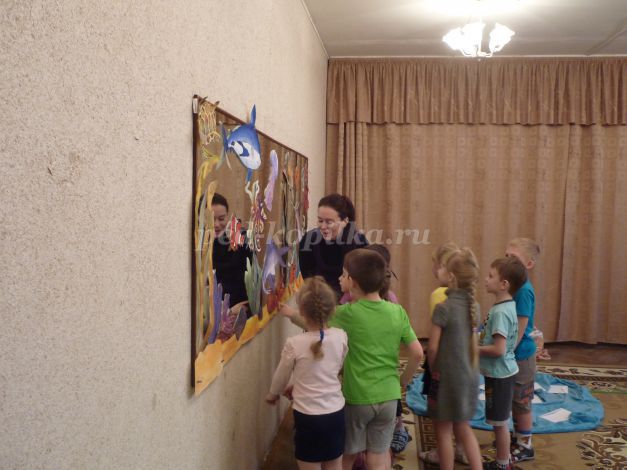
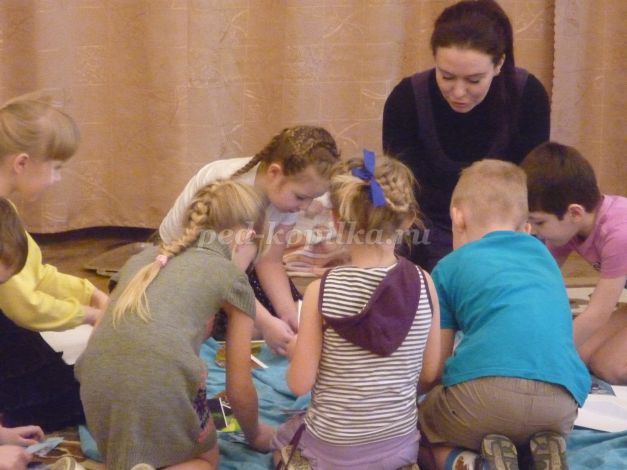
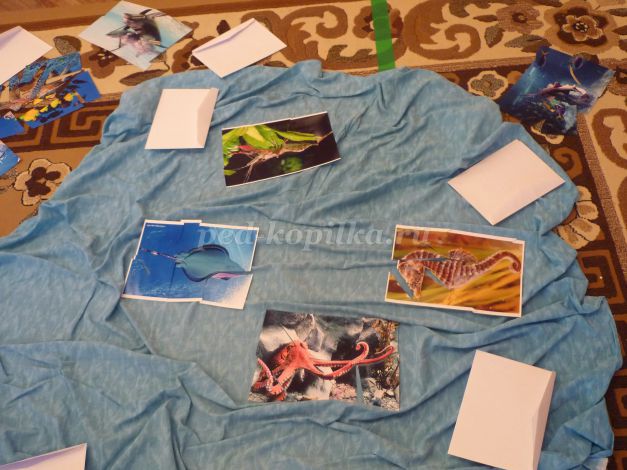
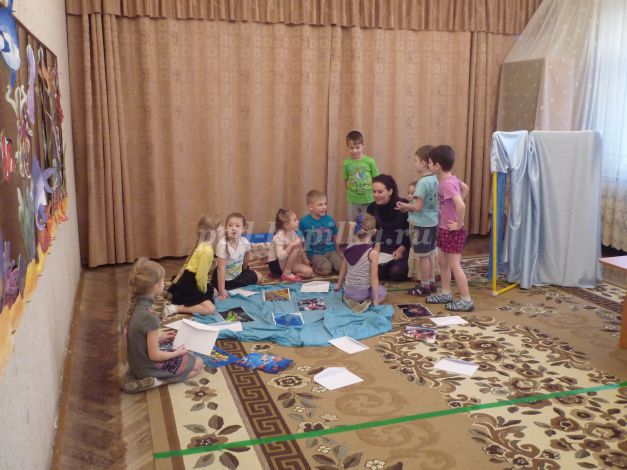
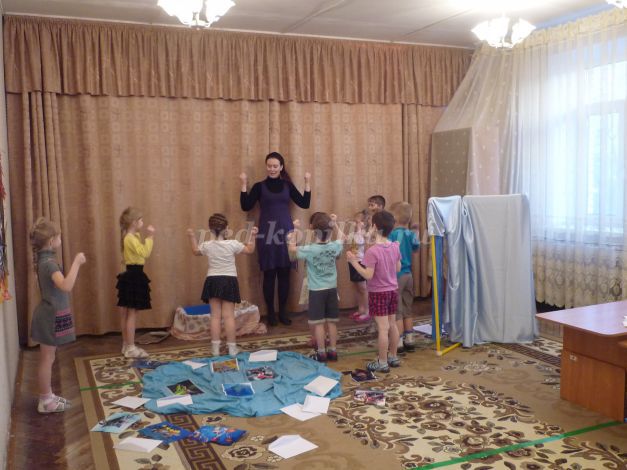
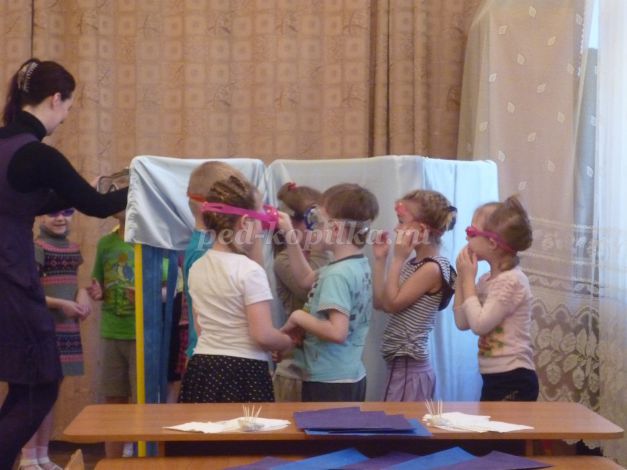
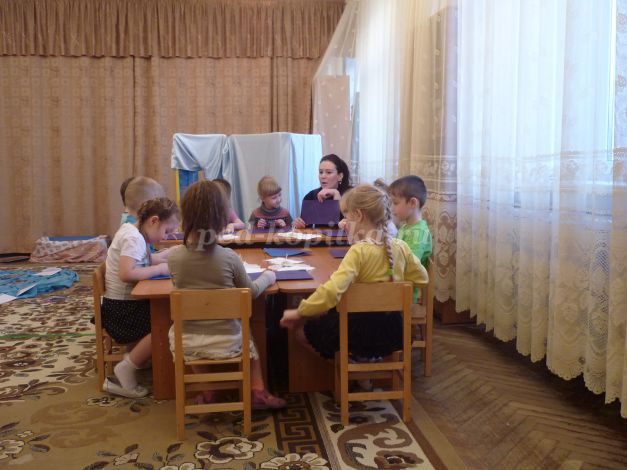
Children, under the supervision of a teacher, draw a composition on a marine theme.
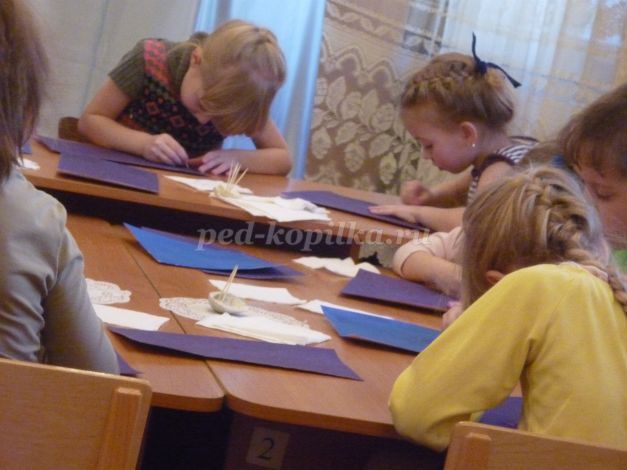
The child with the finished work puts on a mask and “surfaces”, the teacher directs him to a relaxation corner (a bath filled with sand with “surprises” - the game “find a sea souvenir”). At the end of the lesson, children's works are filed in a common “photo album”.
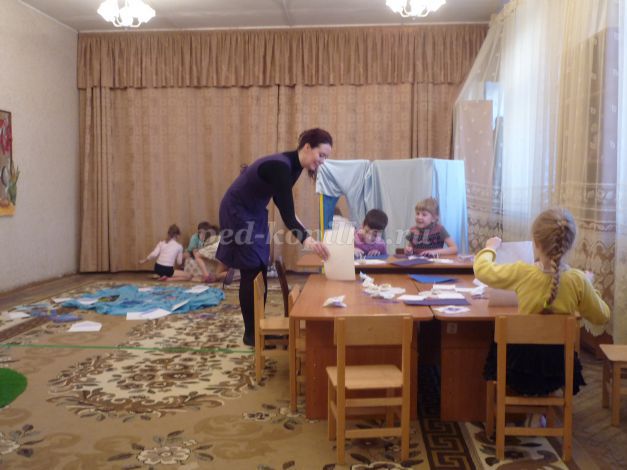
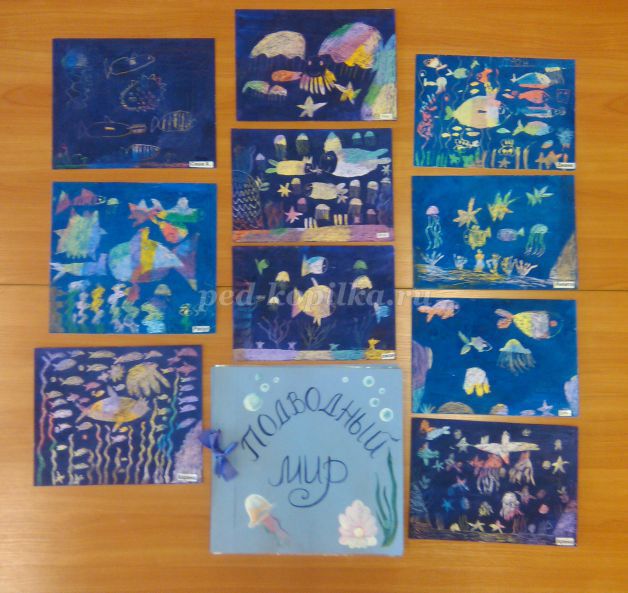
Children's works
We recommend watching:
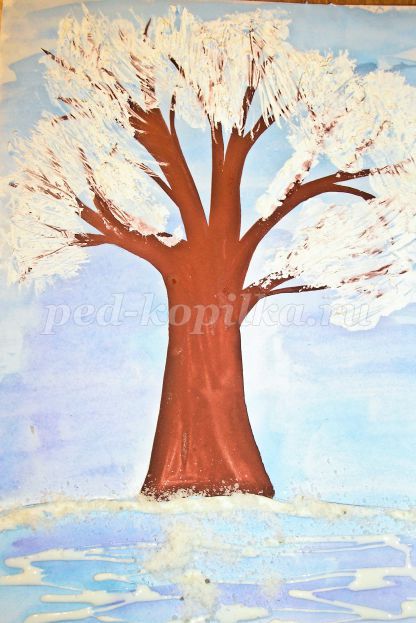
How to draw a winter tree Decorative art “Encaustic” + MK Non-traditional painting using the Spray technique on the theme: Winter Technique Scratchboard for preschoolers
Similar articles:
Master class for preschool teachers. Unconventional drawing techniques
"Wet" drawing technique
Parents about non-traditional drawing techniques
Application with drawing elements
Non-traditional drawing techniques in kindergarten for children 5-6-7 years old
